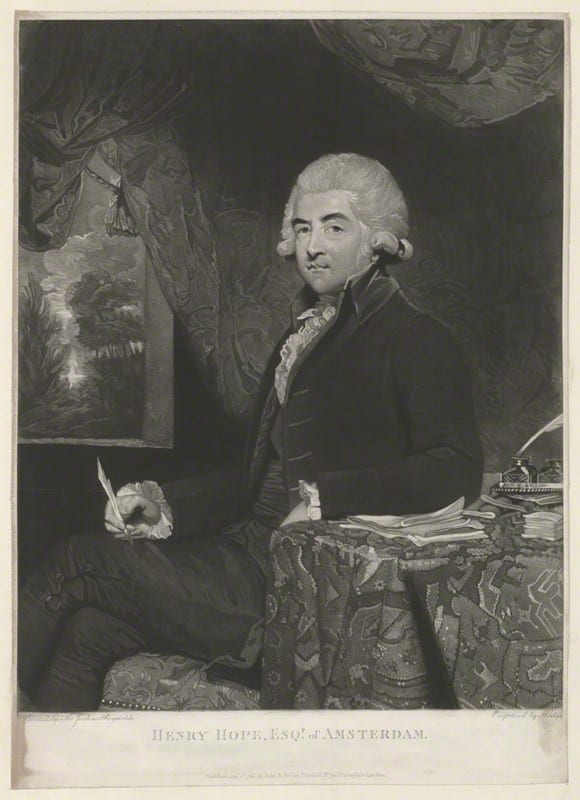Cavendish Square 3: Nos 15 and 16 (with 2–14 Harley Street)
By the Survey of London, on 19 February 2016
This is the third in an occasional series of posts about Cavendish Square. At the corner of Cavendish Square and Harley Street is ‘les 110 de Taillevent’, a recently opened branch of a Parisian restaurant. This is the latest twist in the convoluted history of a building that despite serial alterations stands as a remnant of the square’s aristocratic origins.

Nos 15 and 16 Cavendish Square on the corner with Harley Street, from the south-west in 2014 (© Historic England, Chris Redgrave). If you are having trouble viewing images, please click here.
After Cavendish Square was laid out in 1717–18, the Duke of Chandos intended to build himself a palace across the whole of its north side. He was obliged to back-pedal after the South Sea Bubble burst, and in 1724–5 began building a pair of houses at either end of the frontage, to designs by Edward Shepherd. Dilatory and indecisive, Chandos left the carcasses incomplete. He eventually decided to take that to the west for himself, and returned to complete it in 1733–5. Entered from Harley Street, the house had a painted imperial staircase, expensively decorated by Gaetano Brunetti and Jacopo Amigoni.

James Brydges, 1st Duke of Chandos, by Herman van der Myn, c.1725 (Reproduced by kind permission of the National Portrait Gallery, London).

‘The Music Party’ by Philip Mercier, 1733, depicting (from left to right) Princess Anne, Princess Caroline, Prince Frederick and Princess Amelia reading from Milton. In the background is a depiction of the Kew Palace, or the Dutch House at Kew Gardens (Reproduced by kind permission of the National Potrait Gallery, London).
From 1762 Princess Amelia, George II’s second daughter, lived here and there was it seems a decline from Chandos’s opulence. After she died in 1786, The Times (21 Feb 1787, p.3) reported, ‘Of all the ill-furnished houses – perhaps that of the late Princess Amelia was the worst. With the exception of one large glass, it was much of the same sort as might have been expected at a plain Esquire’s in the country.’ James Hope, the 3rd Earl of Hopetoun, then undertook substantial improvements with Robert Adam as his architect. The entrance moved northwards within a tetrastyle stone porch (now gone) and under a pedimented aedicule (extant) and the north wing was much enlarged. In 1795 in moved Henry Hope, a distant cousin, Europe’s pre-eminent merchant banker, a great art collector and a refugee from Amsterdam. Poussins faced the front door and the front drawing room was graced by a Titian, two Veroneses and several Van Dycks. The last occupant of the whole house from 1816 to 1824 was George Watson Taylor MP, another art collector and, as an heir to a Jamaican fortune, a defender of Caribbean vested interests in Parliament.

Henry Hope by Charles Howard Hodges, after Sir Joshua Reynolds, c.1787 (Reproduced by kind permission of the National Portrait Gallery, London).

Study for ‘Patrons and Lovers of Art’ by Pieter Christoffel Wonder, 1826-1830, depicting George Watson Taylor kneeling in front of Titian’s ‘Bacchus and Ariadne’ (Reproduced by kind permission of the National Portrait Gallery, London).
Such a vast house in this location was no longer tenable and in the later 1820s Thomas Hardwick oversaw the separation of the capital mansion from its back parts with remodelling that included a top-lit staircase that is still extant. Hardwick added what is now 15 Cavendish Square and, on the garden, 6–14 Harley Street. The largest dwelling, on the corner, was taken by William Carr Beresford, Viscount Beresford, a hero of the Peninsular campaign. Dr Henry Herbert Southey, an eminent physician and younger brother of the poet Robert, took what became 4 Harley Street. Further division and alterations followed in 1863 and further eminent doctors and merchants moved in. The last private resident of the corner property was Edward Berman, a German button importer. No. 15 saw Beaux Arts alterations for the Jockey Club in 1913 and the corner block was converted with ground-floor rustication in 1926–7 to be a branch of Coutts Bank that closed in 2012.
 Close
Close



